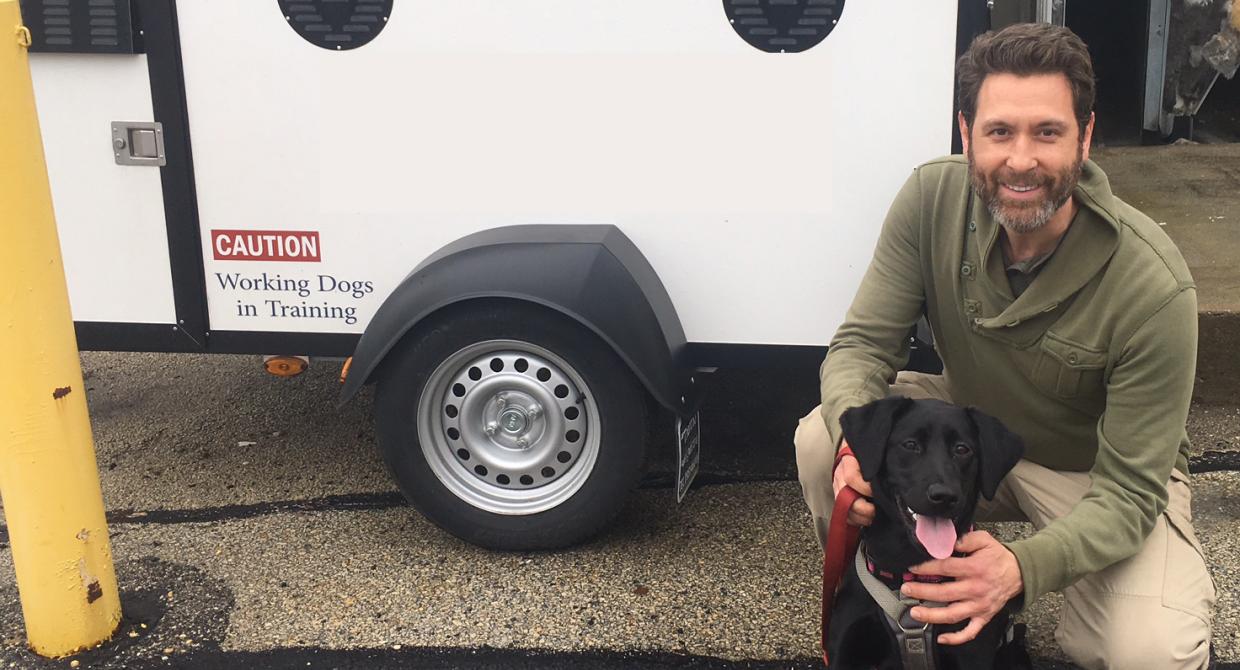Help the Trail Conference Launch a Conservation Detection Dog Program
Title

Body
By supporting the Trail Conference's Conservation Detection Dog Program, you'll allow us to be at the forefront of early invasive species detection.
The Trail Conference is the leader in regional efforts to combat invasive species. As such, we are always looking for the most effective ways to diminish the impact invasives are having on the environment. That’s why the Trail Conference is set to launch a Conservation Detection Dog program – the first of its kind in the Northeast.
Utilizing their exceptional sense of smell, dogs have been commonly used for search and rescue, as well as weapons and narcotics detection. These tracking and detection skills are now being used to protect our wild spaces. In 2010, the journal Invasive Plant Science and Management published a study that concluded trained dogs could smell and detect twice the number of invasive plants that humans could observe with their eyes.
In a metropolitan region highly prone to invasive infestations, early detection is a key component of invasive species management. The addition of a conservation detection dog to the Trail Conference’s Invasives Strike Force (ISF) will increase both the quality and quantity of our invasive surveys.
We are in currently in talks with Penn Vet Working Dog Center in Philadelphia to secure a dog that can be trained to detect invasives, particularly the presence of scotch broom (Cytisus scoparius). This species was chosen because it is targeted for eradication by the Lower Hudson Partnership for Invasive Species Management (PRISM), it is easy for the handler to identify, and it grows in fields among other plants, which can make it otherwise difficult to detect.
During their searches together, the dog will wear a GPS collar to record the locations of surveys. Once the dog detects the presence of a target species, our Invasives Strike Force team will be called in to manage it. Over time, we hope to train the dog to detect multiple species, including Southern pine beetle, an invasive insect that has been devastating pine forests, or spotted lanternfly, a threat to grape, apple, and hops crops.
Joshua, a canine handler for New Jersey Task Force 1 and FEMA searching for live victims and a volunteer at the Animal Care Centers of NYC, has already made several trips to visit and practice with the detection dogs at the Penn Vet Working Dog Center. The only thing we need now is your support.
The Trail Conference needs to raise $10,500 to successfully launch this program. Thanks to a challenge grant from Paul and Joan Zofnass, every gift to the Conservation Detection Dog Fund will be matched at 50 cents on the dollar. So if you give $100, your gift automatically turns into $150. Funds will be used to find the perfect dog to become a member of our Trail Family, cover his or her training, insurance, and care expenses.
Help the Trail Conference’s Invasives Strike Force to be at the forefront of early detection. Support the Conservation Detection Dog Program today!
